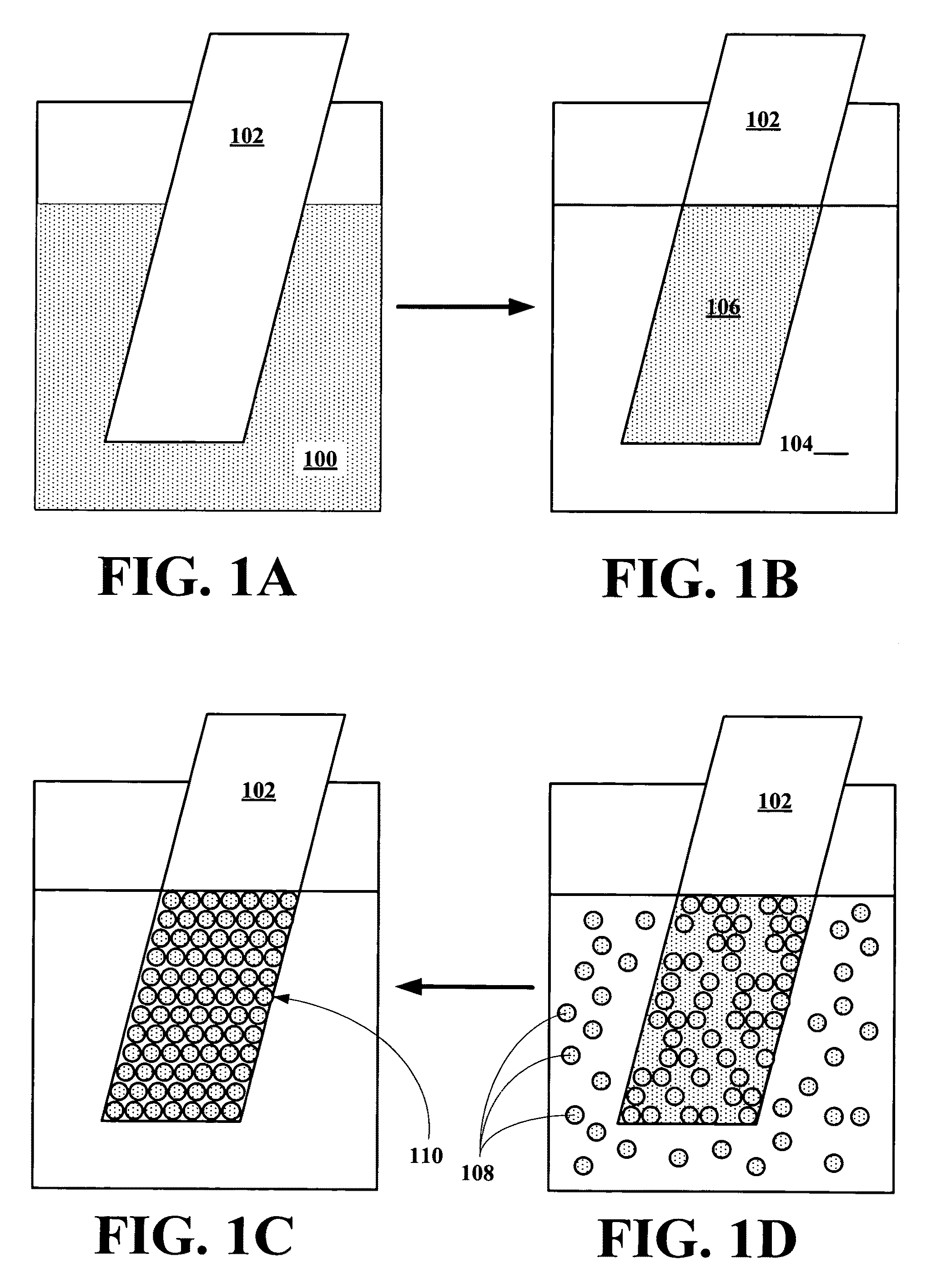Implantable biosensor from stratified nanostructured membranes
a nanostructured membrane and biosensor technology, applied in the field of biosensors, can solve the problems of increasing the refractive index, reducing the scattering coefficient of the tissue as a whole, and limited application of polymer-based sensors in medicin
- Summary
- Abstract
- Description
- Claims
- Application Information
AI Technical Summary
Benefits of technology
Problems solved by technology
Method used
Image
Examples
examples
Chemicals
[0153]All the chemicals, unless otherwise specified, were purchased from Aldrich (Milwaukee, Wis.) and were used without further purification. Collagen type IV (acid soluble, from human placenta) was purchased from Sigma-Aldrich (St. Lois, Mo.). Ultrapure 18 MΩ / cm water was used for all experiments and for washing. The pH of solutions was adjusted with diluted HCl or NaOH. All experiments were performed under atmospheric conditions, except synthesis of semiconductor nanocrystals.
Procedures
[0154]Aqueous colloidal solutions of thioglycerol-capped CdTe nanocrystals were prepared as described previously.9B Before the assembly, the substrates were subjected to an extensive cleaning procedure. Glass and silica wafers were cleaned in freshly prepared “piranha” solution (2:1 concentrated 98% H2SO4: 30% H2O2, DANGEROUS in contact with organic matter) for 5 min then rinsed extensively with water, and finally dried under a stream of nitrogen. Petri dishes were used as received.
[0155]T...
PUM
 Login to View More
Login to View More Abstract
Description
Claims
Application Information
 Login to View More
Login to View More - R&D
- Intellectual Property
- Life Sciences
- Materials
- Tech Scout
- Unparalleled Data Quality
- Higher Quality Content
- 60% Fewer Hallucinations
Browse by: Latest US Patents, China's latest patents, Technical Efficacy Thesaurus, Application Domain, Technology Topic, Popular Technical Reports.
© 2025 PatSnap. All rights reserved.Legal|Privacy policy|Modern Slavery Act Transparency Statement|Sitemap|About US| Contact US: help@patsnap.com



